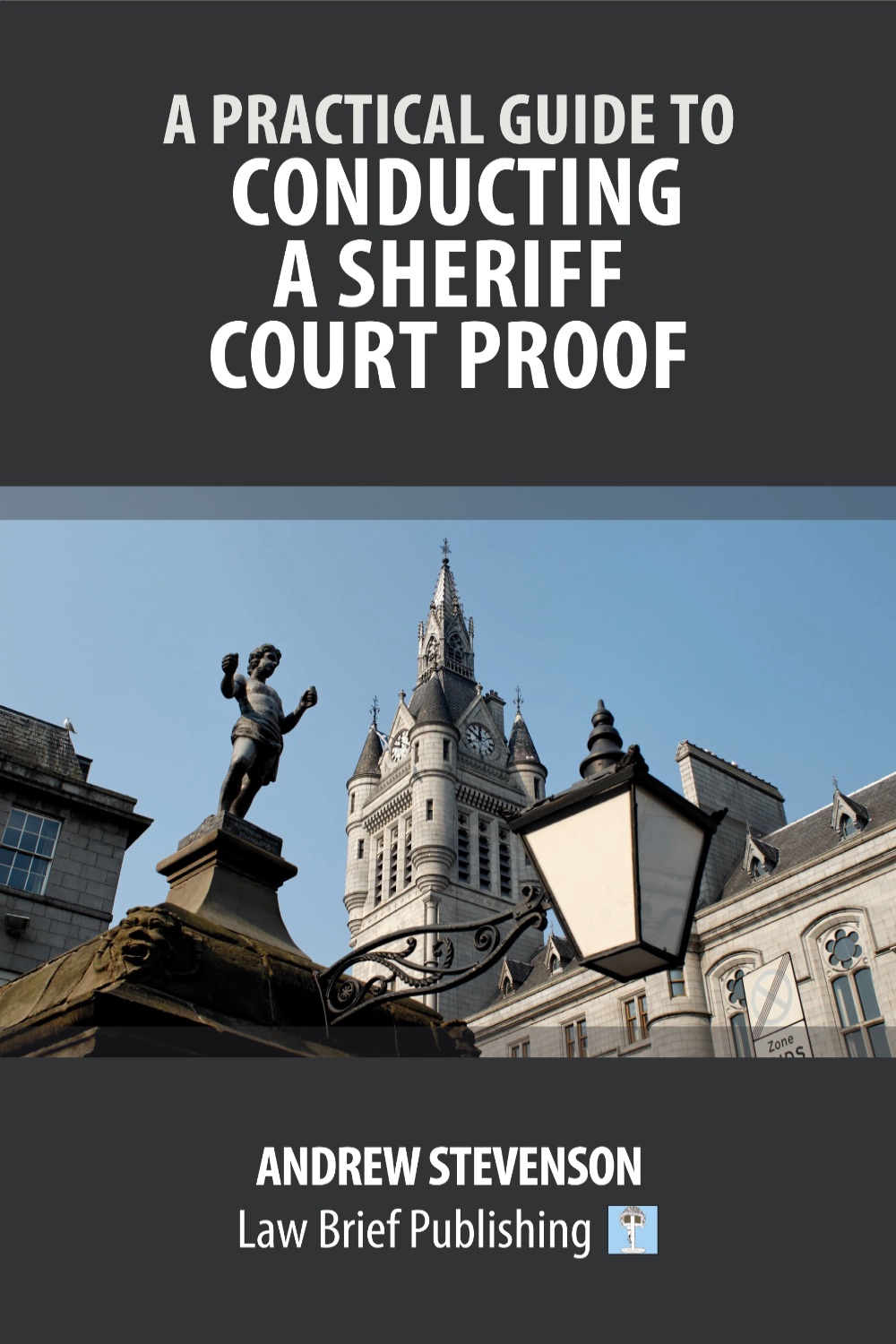Review: The art of the Sheriff Court proof

Former sheriff Douglas Cusine commends a new practical guide to running a Sheriff Court proof.
The final sentence of this very useful book is this: “Running a proof can be enjoyable, but you will find it more so if you have prepared it well, you are properly funded, and you are as well organised as you can be.” Seems obvious, but the author quotes a judge who said: “Litigation is a risky business. For one reason or another, it rarely goes according to plan.” Not everyone is well prepared (but they may think they are!) and hence not as well organised as they should be. It is trite to say that if your case is a “sure-fire winner,” or a “sure-fire loser”, it should also be settled: and so, it is those cases which fall between these two extremes which can go to proof.
Of the 26 chapters, we do not get into court until chapter 15. The book does not have an index, but it does not need one, as the chapters are, in the main, of “bite-size” proportions, but each is full of useful advice from someone of 30 years’ experience. The points are often illustrated by what are sometimes described as “war stories”, but they are important, where, as in this book, the author not only lists success but mistakes. Some are not too keen to admit mistakes, but we should all learn from ours and those of others.
In one of the early chapters, the author sets out the various roles which the solicitor may have, but an important one is that of an officer of the court. That means, for example, that even if the client wants to conceal something, e.g. about finances, the solicitor must reveal this. The client may not like that, but that is just tough. There is a marked difference between acting for your own client and acting for another solicitor. You are relying on that solicitor’s preparation which may not be as good as yours and, if you are conducting a proof, you may see the witnesses for the first time on the day, with all the possible disadvantages that may have.
The author says that most sheriffs are cool, calm and collected. Hopefully, that is generally true, but the solicitor must be aware that some sheriffs do not quite grasp the notion that it is not their case and so, interventions should be kept to a minimum. As the author correctly says, it acceptable for the sheriff to ask for clarification, but not to fill gaps in what may appear to be inadequate examination, or cross-examination.
The book covers all the preliminaries, including how to avoid going too proof, but also the caution required in making decisions about settling. Once the proof is assigned, the solicitor needs to ensure, e.g. that witnesses are cited, but before that, witnesses’ availability and any vulnerability should be canvassed. One should avoid having a proof discharged because you did not check in advance that an essential witness will be in the Costa Living at that time, or you are scrambling around to find another courtroom because a witness is not able to climb stairs.
One of the very useful parts of the book is about managing the evidence, but in advance, you have to decide what to lodge. It is generally a mistake to lodge everything, and you should not assume that the opponent’s hand has been fully disclosed in what has been lodged. Managing the evidence includes making decision of what to agree, which is not necessarily an easy decision.
Chapter 14, on “making things easy on the day” starts well before that in that the author sensibly suggests starting perhaps six weeks beforehand to decide on your questions, and to familiarise yourself with the productions and when you think they should be referred to. Coloured pencils come into their own then and at the proof itself. “You have to think on your feet” and how! because, as is pointed out, things may not go the way you hoped. “Once the proof starts you have lost control. For example, witnesses may not say what you thought; indeed they may tell the court of their impressions.
There are helpful suggestions about how to examine your witnesses, what to ask and how to ask, but also on the art of cross-examination. It is rarely helpful to antagonise a witness, even if you are convinced that the witness is not telling the truth. A witness who may be expecting a “hard time” can be disconcerted by your non-aggressive approach.
This book, which has 99 pages, sets out things clearly, amplified with great advice and will be of particular use to those in the early stages of their careers, but that is not to say that the experienced agent has nothing to learn from it. No matter how experienced, we should all have an open mind to being informed. Who better to do that than this author? You will not regret spending the money to have your own copy. Put your name on it!
A Practical Guide to Conducting a Sheriff Court Proof by Andrew Stevenson. Published by Law Brief Publishing, 99 pp.









